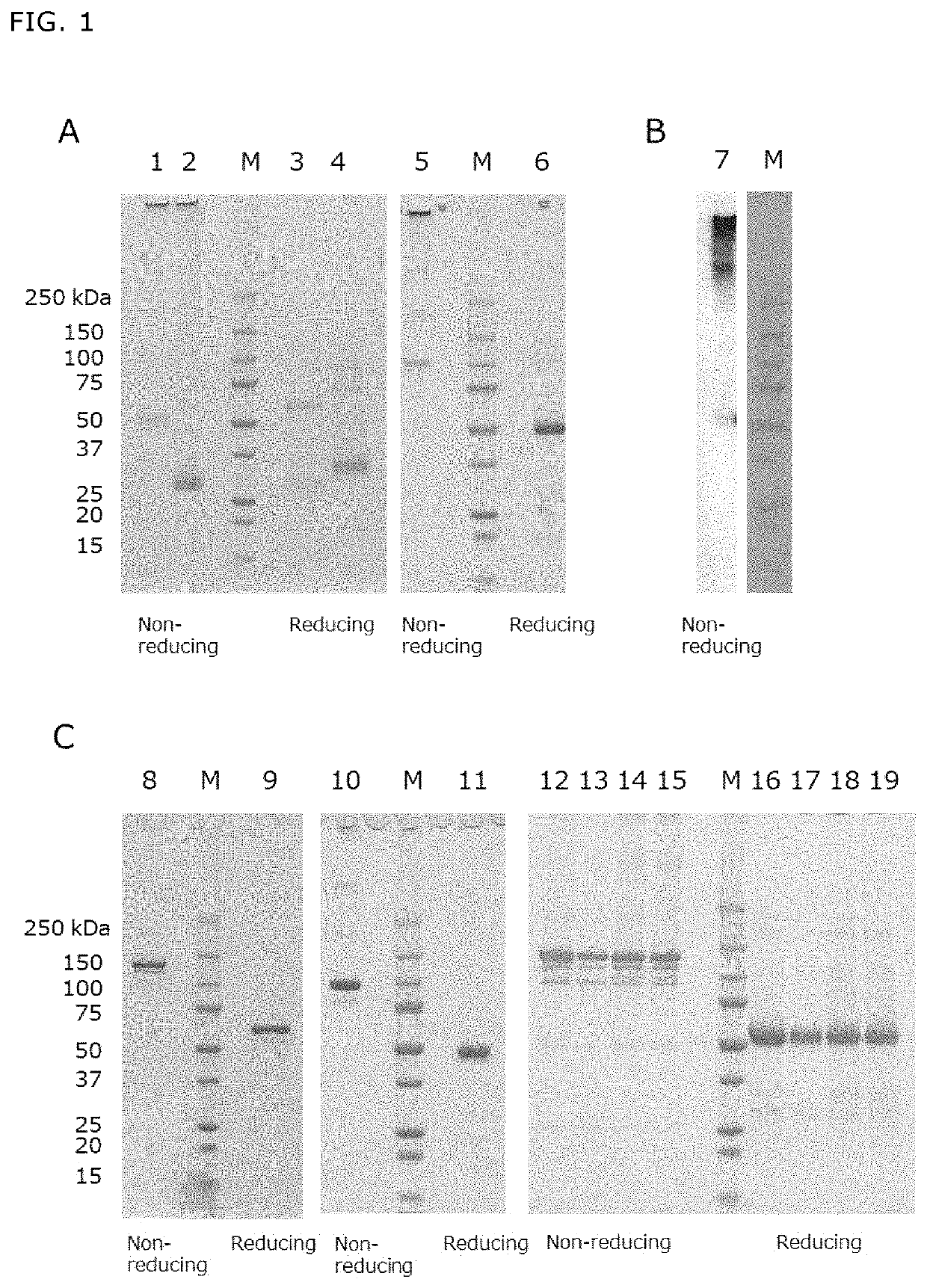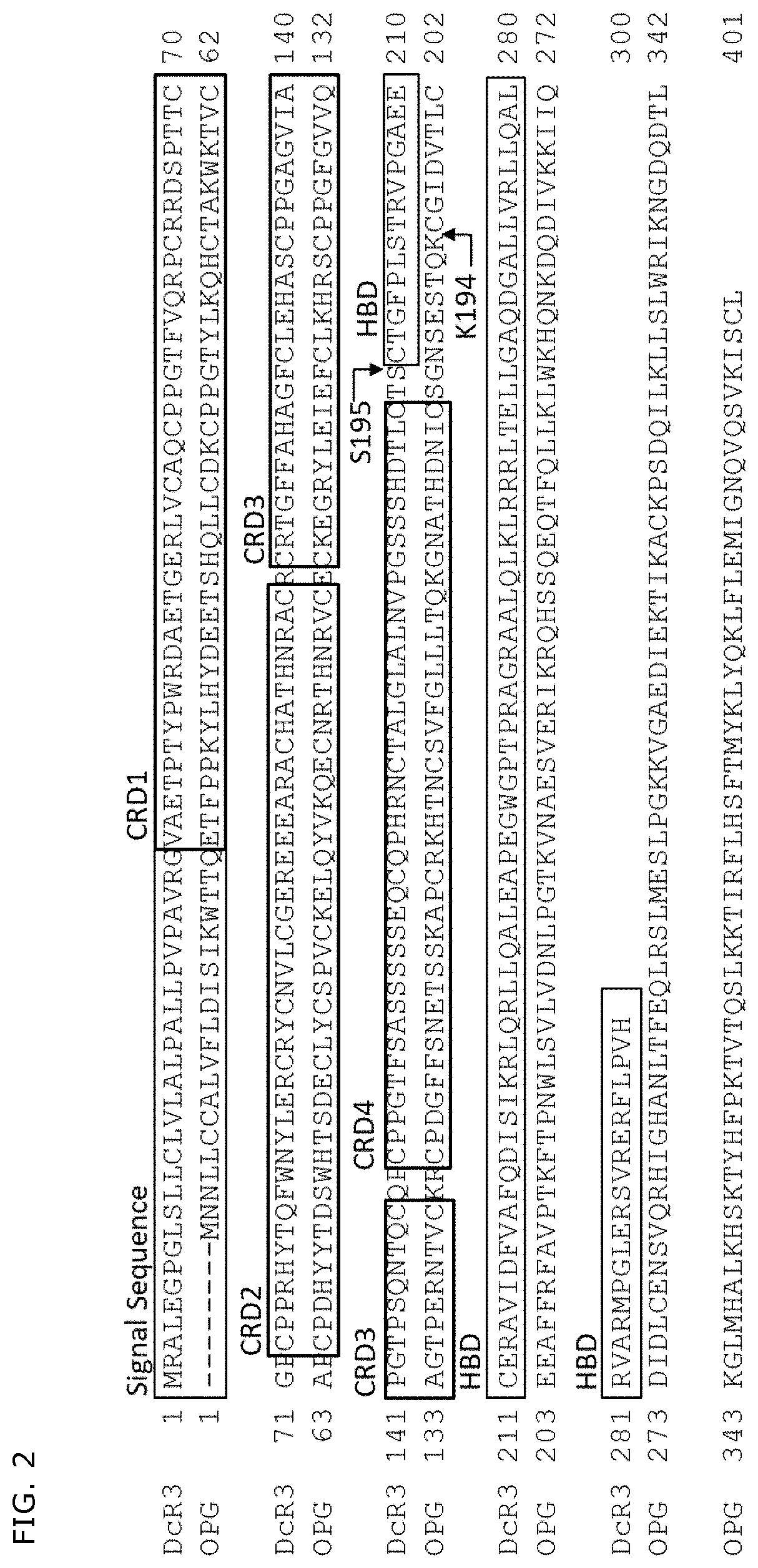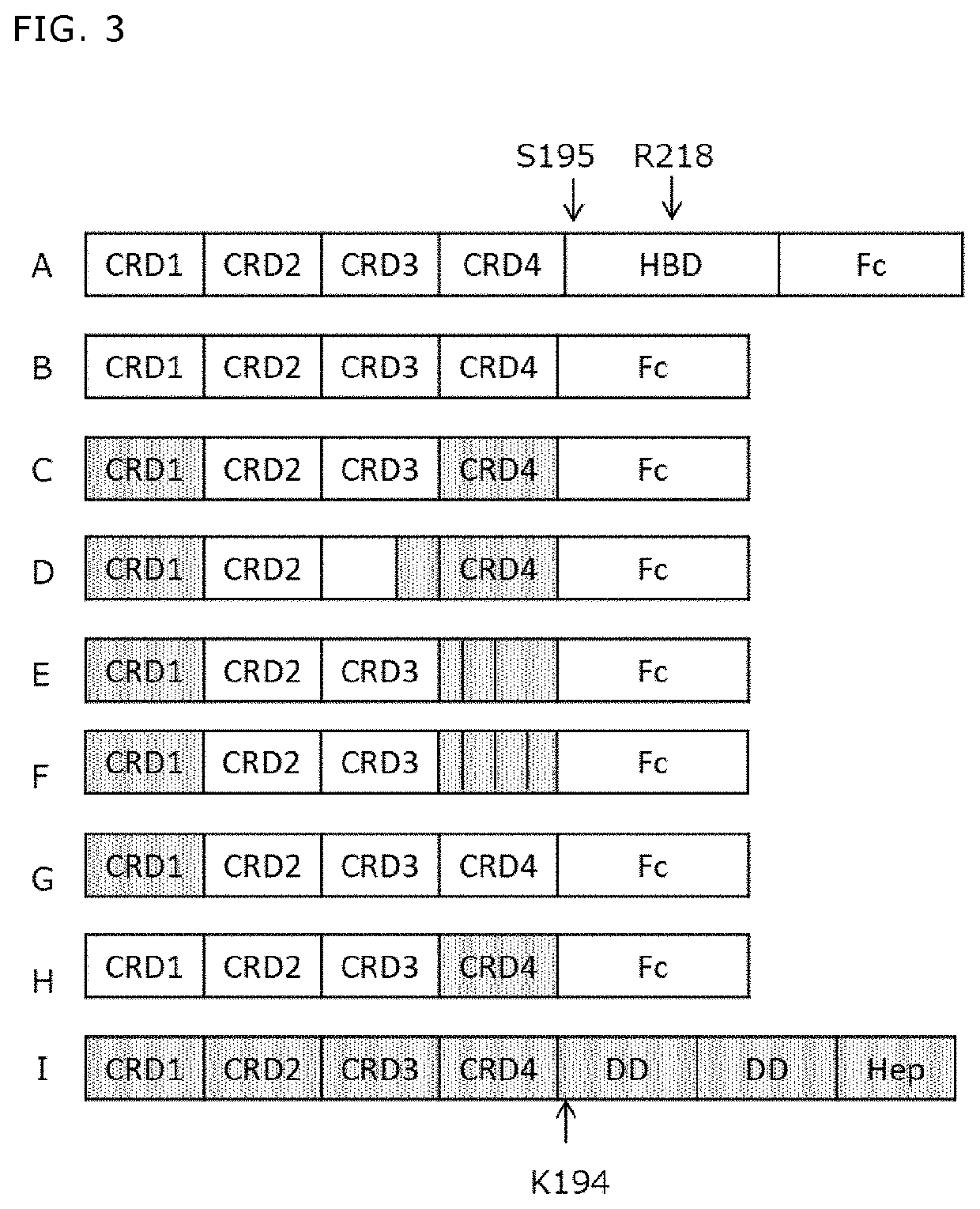Dcr3 variant
a variant and dcr technology, applied in the field of dcr3 variants, can solve the problems of poor in vivo kinetics
- Summary
- Abstract
- Description
- Claims
- Application Information
AI Technical Summary
Problems solved by technology
Method used
Image
Examples
example 1
[Example 1] Evaluation of Aggregability of Wild-Type DcR3 in Mammalian Cell
[0378]A fusion protein (DcR3 FL-Fc) (FIG. 3A, SEQ ID NO: 100) of wild-type DcR3 (also referred to as full-length DcR3) (SEQ ID NO: 4), a linker sequence IEGRMD (SEQ ID NO: 106) and a human IgG1 Fc region (g1S) (SEQ ID NO: 72), a fusion protein (S195-Fc) (FIG. 3B, SEQ ID NO: 102) of human DcR3 lacking an HBD region (SEQ ID NO: 108), a linker sequence IEGRMD (SEQ ID NO: 106) and a human IgG1 Fc region (SEQ ID NO: 72), and a protein (DcR3 FL-FLAG) (SEQ ID NO: 104) obtained by adding a FLAG tag (SEQ ID NO: 110) to full-length DcR3 (SEQ ID NO: 4) were produced as follows.
[0379]Regarding DcR3 FL-Fc, a DNA fragment of a signal peptide sequence, a DNA fragment (SEQ ID NO: 3) of human DcR3, a DNA fragment (SEQ ID NO: 105) of a linker sequence IEGRMD, and a DNA fragment (SEQ ID NO: 71) of Fc (g1S) were artificially synthesized (GENEWIZ, Inc. or Sigma-Aldrich Co. LLC), followed by insertion using In-Fusion HD Cloning Ki...
example 2
[Example 2] Production of DcR3 Variant That Is Not Aggregated in Mammalian Cell Expression System
[0387]There has not been known a human DcR3 variant that is not aggregated in a mammalian cell expression system. Thus, it was attempted to produce a DcR3 variant that results in a decreased amount of aggregates while maintaining the activity of DcR3. DcR3 is a soluble molecule consisting of 300 residues, and has a signal peptide at the N-terminal side, followed by four cysteine rich domains (CRD1, CRD2, CRD3, CRD4), which are characteristic of a TNF receptor superfamily (TNFRSF), and the C-terminal side of DcR3 consists of a heparan sulfate binding domain (HBD), which includes a heparan sulfate-binding motif and is rich in basic amino acids (FIG. 2, 3A). All of LIGHT, TL1A and FasL, which are DcR3 ligands, bind to CRD2 and CRD3 of DcR3. Thus, while maintaining a region including CRD2 and CRD3 of DcR3, CRD1 and / or CRD4 of DcR3 was / were substituted with CRD1 and / or CRD4 of a soluble decoy...
example 3
[Example 3] Analysis of Proportion of N-Linked Glycosylation of Chimera A-Fc (g4PEK) and Evaluation of Influence on Aggregability
[0399]From the amino acid sequence of chimera A-Fc (g4PEK) (SEQ ID NO: 82), it is predicted that the CRD4 derived from OPG includes three potential N-linked glycosylation sites each consisting of Asn (N131, N144, N157), and that the Fc region includes one potential N-linked glycosylation site consisting of Asn (N260). Thus, the presence or absence of N-linked glycosylation of chimera A-Fc (g4PEK) was evaluated by the following method. As the sample preparation, chimera A-Fc (g4PEK) was subjected to reduction and alkylation treatments and the N-linked glycans of chimera A-Fc (g4PEK) were cleaved by PNGaseF treatment, and then the proteins were digested by each protease of trypsin, endoproteinase Asp-N and chymotrypsin. The peptide mixture thus obtained was dissolved in 5% (v / v) acetonitrile / 0.1% formic acid, followed by an analysis with a liquid chromatogra...
PUM
 Login to view more
Login to view more Abstract
Description
Claims
Application Information
 Login to view more
Login to view more - R&D Engineer
- R&D Manager
- IP Professional
- Industry Leading Data Capabilities
- Powerful AI technology
- Patent DNA Extraction
Browse by: Latest US Patents, China's latest patents, Technical Efficacy Thesaurus, Application Domain, Technology Topic.
© 2024 PatSnap. All rights reserved.Legal|Privacy policy|Modern Slavery Act Transparency Statement|Sitemap



